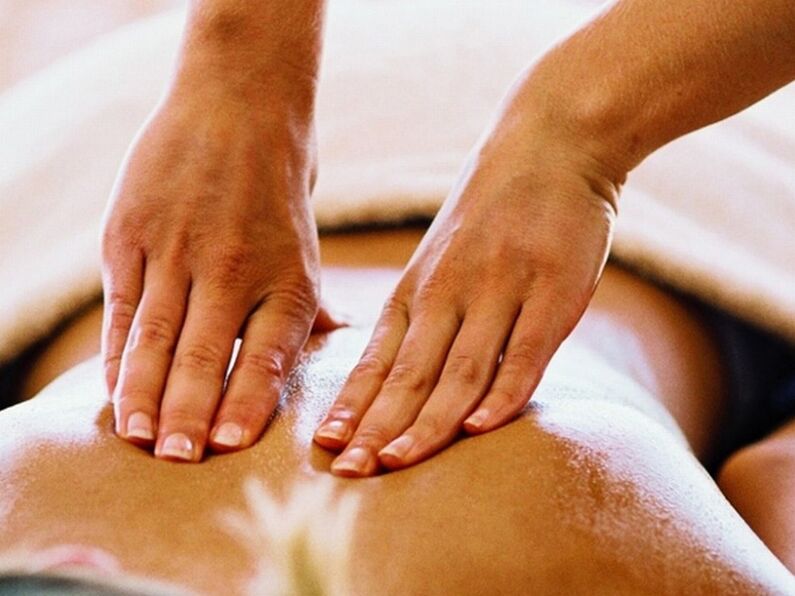Cervical osteochondrosis is a disease in which pain occurs not only in the cervical region, but also in the head and shoulder joints, and the circulation of the brain is disturbed. Contrary to the notion that the disease only targets older adults, more and more young people are turning to neck pain specialists. It has to do with the way most people live. Working in front of a computer, poor posture, bending over, and uncomfortable beds are all reasons for the development of cervical osteochondrosis. If you know why it appears, you can treat it at home in the initial stages of the disease.
Causes and symptoms of cervical osteochondrosis
The main causes of cervical osteochondrosis:
- Sedentary lifestyle, computer work;
- Improper metabolism;
- Salt accumulation between the vertebrae;
- an unbalanced diet;
- hereditary;
- cervical spine injury;
- Hormones are not functioning properly.

Before looking for a cure for osteochondrosis in the neck, here's what you need to know about the symptoms of osteochondrosis pain. In order to correctly identify symptoms, it is worth knowing that the vertebral artery is one of the largest and most important blood vessels that runs through the cervical spine area. It is through it that the brain acquires all the necessary substances. The curvature of the intervertebral disc also causes intense pain, called osteochondrosis. At first, this disease of the joints and spine is almost undetectable because the disease develops gradually, and pain already occurs when the space between the vertebrae is compressed to the point that it affects the nerve endings in the spine. This requires a violation of cerebral circulation. Only at this point the first symptoms appear:
- First, neck pain occurs;
- Frequent dizziness and headaches, especially when exercising;
- Weak limbs, impaired movement coordination;
- In addition, symptoms may be tinnitus, tinnitus;
- sudden mood swings;
- Violation of digestive and urinary processes in the body.
If you don't consult a specialist in the early stages of osteochondrosis development, more serious spinal problems, down to curvature, may occur.
Treatment of cervical osteochondrosis
There are several ways to treat osteochondrosis of the neck. Every patient with this condition will find suitable pain relief methods, which all depend on the severity of the disease. For example, dizziness caused by cervical osteochondrosis can be treated with application according to folk remedies. It is important to remember that any treatment should be done comprehensively.
folk remedies
Traditional medicine, the correct use of prescriptions, can effectively relieve symptoms. Great to help with disease herbal infusions and decoctions, which work to relieve inflammation, here are some:
- One Needle Soup. Pour boiling water over the pine needles, let it brew, eat the prepared slurry twice a day, or drink an infusion, which will help eliminate the cause of the headache;
- Garlic Ginger Flakes. Combine garlic and ginger root in equal proportions and add a little butter. Apply the resulting mixture to the affected area. If the ginger is only in the form of seasoning, you can add a spoonful of powder, the effect is the same;
- grated potatoes and honey mixOne-on-one, the resulting lump is compressed on a cloth, taped to the focal point of pain and left overnight;
- horseradish leavesDip in boiling water, then stick the plant around your neck, the water can also be used for compresses.
Also, don't forget essential oils and herbs, which combined with alcohol make for an excellent warm massage. Within a week of home treatment, the inflammatory process should subside, and if this does not occur, you should contact a specialist immediately.

Operation
Surgery is a fairly time-consuming and complex procedure, so this treatment is only used in the most extreme cases, and only when other methods are ineffective.
The decision whether surgery is needed is made by the doctor who treats osteochondrosis - a neurosurgeon. Only after the diagnosis is made, all the tests and examinations are performed, as well as the examination of the patient's cerebral blood vessels, does the preparation for the surgery begin. Surgery is usually required when the disc is destroyed. If possible, it is better to use other methods.
medical treatement
For this disease, treatment depends on its severity. The main function of the drug is analgesic effect. It all depends on how advanced the disease is, and specialists in medical institutions prescribe certain medicines:
- Anti-inflammatory drugs effective against pain and inflammation;
- Corticosteroid medications can also help reduce pain;
- Muscle relaxants are great for relieving muscle spasms;
- taking anticonvulsants due to the development of neuroticism;
- Warming and anti-inflammatory ointments, gels.

physiotherapy
To avoid cervical osteochondrosis and ankylosing spondylitis, the following exercises are recommended:
- Lie on the floor with one hand on your stomach and the other on your chest, inhale and exhale slowly at least ten times. The essence of exercise is that the body must be relaxed;
- This exercise is also performed while lying on the floor, but now on the stomach. With your hands in front of you, slowly begin to lift your head, then your torso, tensing your muscles while keeping your hands on the floor. So you need to stand for a minute and a half. run 4 methods;
- Posture - Sit in a chair with your back straight. Tilt your head forward, trying to reach your chest with your chin. Then tilt your head back as far as possible. Repeat 15 times.
A set of movements is done very carefully, all movements should be smooth, there should be no sudden movements, and if a movement causes discomfort or pain, you do not need to go all out to continue performing it.
physiotherapy
Physical therapy allows patients to strengthen neck and back muscles, correct the position of each vertebra, and stretch with the help of special exercises. Using light weights can improve nerve conduction in the spinal canal. A full practice session allows you to recover faster.

Massage for cervical osteochondrosis
Massage is good because even in the severe stages of the disease it can be done with gentle movements, for this you don't even have to go anywhere, you can always invite a specialist to your home. Typically, chiropractors follow these principles:
- Do not exert force, and the movements should be gentle and not sharp;
- The movement starts from the spine;
- Massage is done with fingers only, no pressure.
Before massaging, the skin is lubricated with a special oil. Some experts turn to cupping, arguing that they improve circulation. Massage is prescribed both during remission and during exacerbations, as it is an excellent preventive measure. One hour of lessons per day is sufficient.

Treating cervical osteochondrosis at home
It is impossible to completely cure cervical osteochondrosis at home. You can only prevent the progression of the disease and stop the pain syndrome. This is because osteochondrosis is a chronic disease that can worsen in some cases and it is impossible to get rid of it completely. Therefore, the question of how to treat cervical osteochondrosis at home is somewhat inaccurate.
Therefore, only preventive measures can be taken against the recurrence of the disease. For this, you need to exercise regularly, exercise more, not sit for long periods of time, and use orthopedic pillows and mattresses. You should also avoid stressful situations and break bad habits.
























